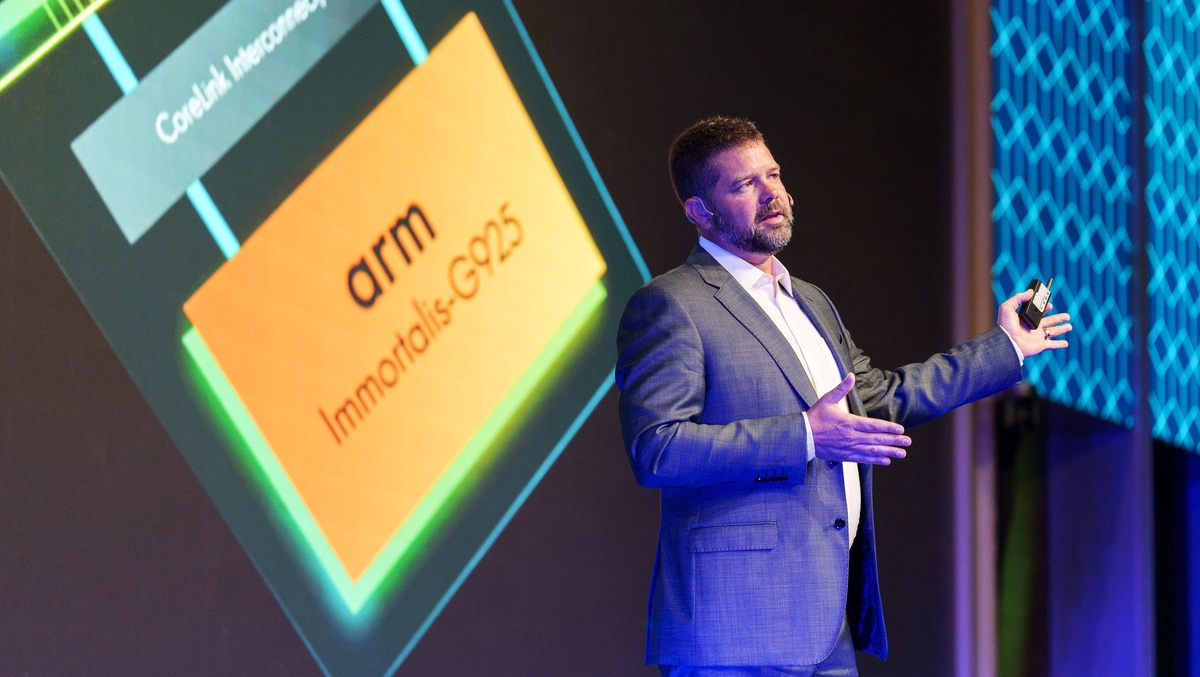
Arm ambitions for 100+ billion AI devices by 2025
At Computex 2024 in Taipei, Arm CEO Rene Haas shared ambitious plans to enable 100+ billion Arm devices to be ready for AI applications from the cloud to the edge by 2025. He detailed the company's strategies and innovations designed to address the growing energy demands of artificial intelligence (AI) and described how Arm's unique software ecosystem underpins its technology leadership.
A central theme of Haas's speech was whether the world has enough energy to meet AI's escalating compute needs. While AI advances rapidly, its performance and energy demands continue to rise. Haas highlighted that Arm's renowned power efficiency, rooted in its history of developing battery-operated devices, positions the company uniquely to meet these challenges. Leading cloud service providers such as AWS, Google, and Microsoft have already adopted Arm's architecture for its superior energy savings.
Arm boasts a legacy of power efficiency that has helped it become a pervasive compute platform. Haas emphasized that Arm's success also stems from its robust software ecosystem, which includes 18 million developers—more than any other processor platform. This extensive developer support is essential for leveraging AI's full societal benefits, from edge devices to cloud training and inference.
To further support developer innovation, Haas introduced Arm Kleidi AI, a suite of AI compute libraries. These tools allow developers to seamlessly run their AI applications on Arm hardware by exploiting underlying hardware features for optimal performance. As Haas noted, without accessible tools for developers, even advanced hardware would be underutilised.
Haas also shared insights from industry partners on the benefits of Arm and Kleidi AI. Executives from Samsung Mobile, Meta, and Google showcased how these innovations could accelerate AI development across various markets. Samsung, for example, highlighted how it leverages Arm technology to drive AI experiences in Galaxy devices, extending its capabilities to AI-powered PCs.
In addition to supporting AI developers, Arm continues to advance its hardware offerings. Chris Bergey, Senior Vice President and General Manager of Arm's Client Line of Business, announced the Arm Compute Subsystems (CSS) for client devices. This marks Arm's first physical implementations of its CPUs and GPUs using leading-edge 3-nanometer nodes. These implementations enable chipmakers to differentiate their products while accelerating time-to-market with proven, high-performing cores.
The new Arm CSS products, built on the Armv9 architecture, deliver significant performance improvements. The Arm X925 CPU, for instance, boasts a 36% uplift in performance compared to its predecessor, alongside enhanced AI capabilities and energy efficiency. Likewise, the Immortalis 925 GPU offers a 37% boost in performance, with a substantial 52% increase in ray tracing capabilities.
Bergey highlighted how these advancements enable a variety of devices, from laptops to wearables, to harness enhanced AI and computational power. The integration of Arm's software ecosystem, including Kleidi AI and compute vision libraries, ensures that developers can efficiently optimize their applications on this next-generation hardware.
As Haas concluded, Arm is committed to delivering the most complete compute platforms, aimed at reshaping the industry and benefiting society at large. With innovations like Arm CSS and Kleidi AI, the company envisions more than 100 billion Arm devices ready for AI by the end of 2025, a milestone that promises to revolutionise technology and its applications globally.
.webp)

